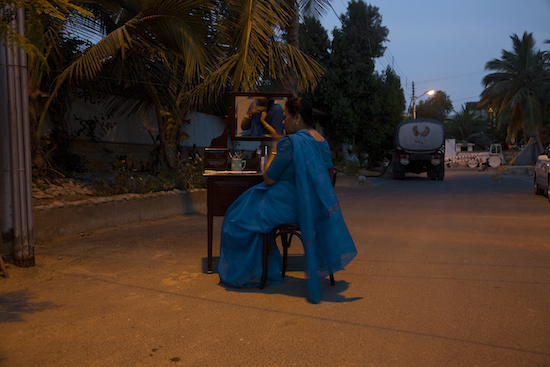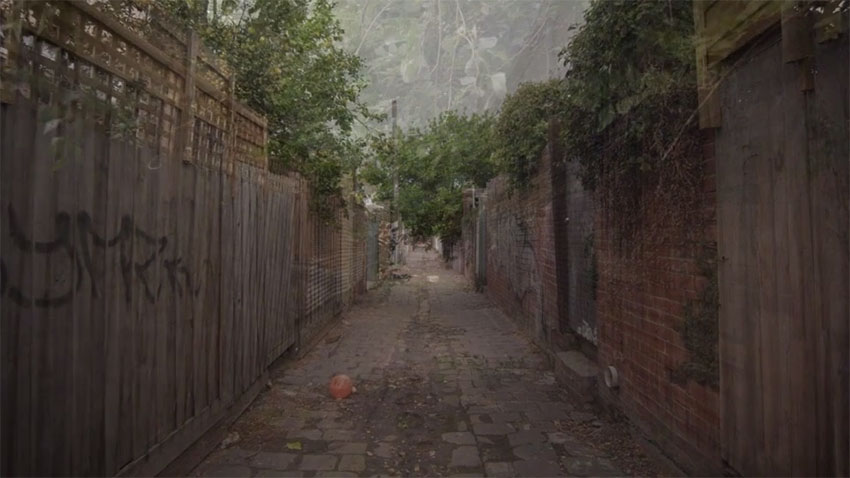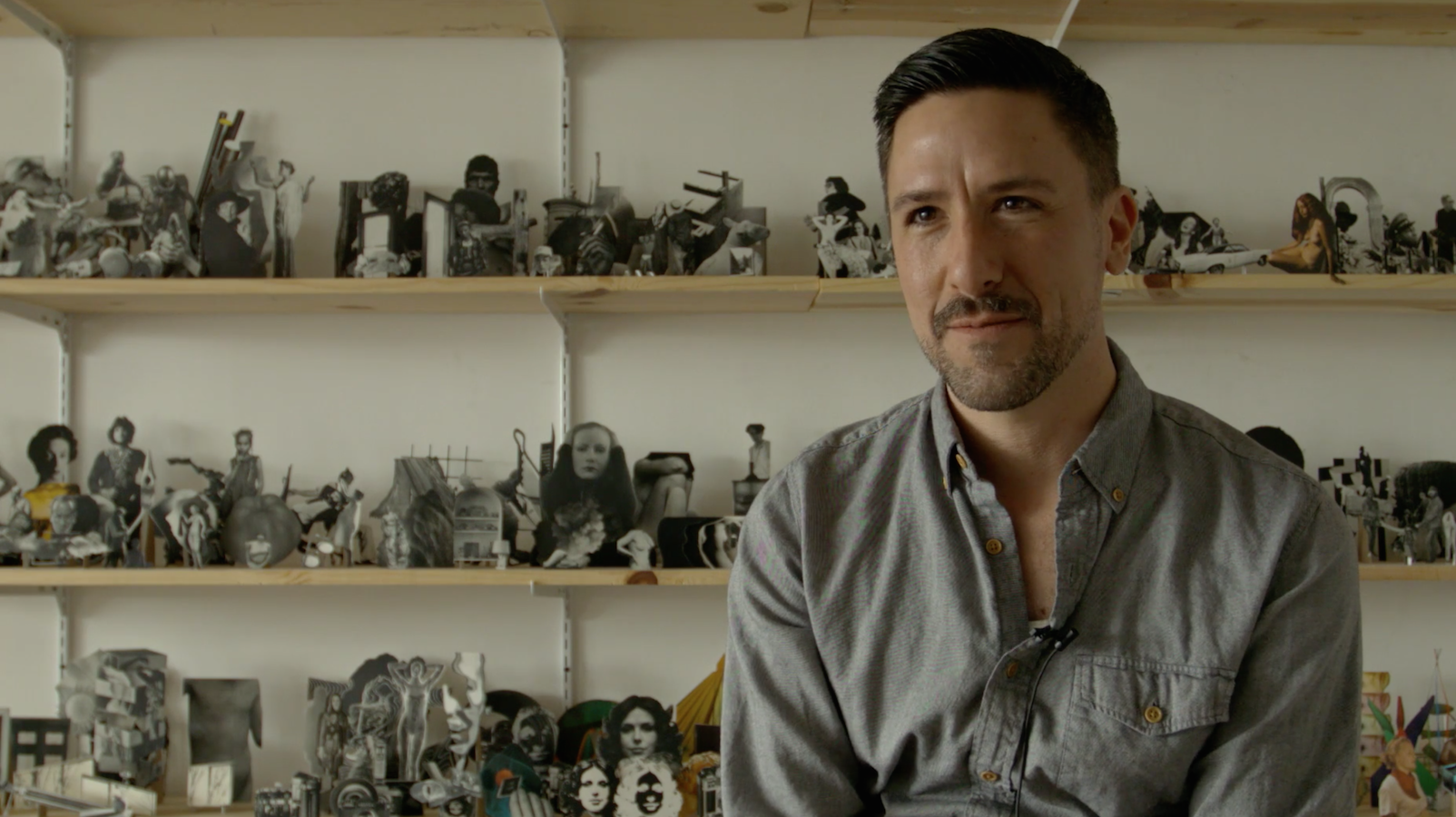The Illusion of Everything
2014 - Film & Video (Film & Video)
Daniel Crooks
The Illusion of Everything (2014) follows an unseen pedestrian as he navigates the Australian city of Melbourne’s dense and intricate network of laneways. The video begins with the pedestrian traversing a seemingly idyllic ivy lined stone and concrete thoroughfare. As his pace begins to accelerate, the camera follows him with greater urgency, slowly settling and become stable again as his pace decelerates. At various moments, side alleys and apertures appear, inviting the pedestrian to take a turn. But before he can, the camera fades out, dissolving to the image of yet another laneway, near identical to the last. The pedestrian continues his forward march again, traversing the next lane until the fade out/dissolve repeats itself again. The sky overhead begins to transition from day to night as the video progresses, and with each dissolve, time itself seems to fade away. The Illusion of Everything is an intricate work of montage: in order to produce the work, Daniel Crooks filmed nearly 200 laneways throughout Melbourne at various points throughout the day and evening hours, finally editing them into a “singular whole, or new whole”. Crooks plays on durational aesthetics creates an almost meditative and transfixing experience of movement, but he also disorients his viewers by disallowing any obvious indicators of real-life places. By making us aware of the elemental mechanics of how video manipulates our sense of space and time, Crooks effectively gives us keen insight into how moving images, at their best, effectively disorient and transcend our perceptual experiences of inhabiting a body.
Daniel Crooks works primarily with video and moving images. Originally trained in animation, he works with time and space as materials and always-evolving digital technology to create complex structures that manipulate and challenge viewers’ perceptions of spatial and temporal dimensions. The intricate and technical aspects of his work often contrast with the commonality of the subject matter, and his videos depict seemingly mundane acts such as walking through a laneway or back alley as a point of departure for more trenchant investigations into how image-based cultures both inform and distort our perceptual experiences of inhabiting our bodies. Crooks received his Bachelor of Graphic Design from Auckland Institute of Technology and his Graduate Diploma of Animation from Victorian College of the Arts School of Film and TV in Melbourne. He has exhibited his work extensively in notable venues internationally, including the Tate Modern in London (2008).
Colors:
Related works featuring themes of: » Architecture's Effects, » Australia and New Zealand, » Collective History, » Contemporary Fact Versus Fiction, » New Zealander
» see more

© » KADIST
Wong Wai Yin
2021Drawn from the widely circulated images of protests around the world in support of women rights and racial equality, the phrase I can’t believe we are still protesting is both the title of Wong Wai Yin’s photographic series and a reference to similar messages seen on protest signages...

© » KADIST
Chen Chieh-Jen
2010Empire’s Borders II – Passage and Empire’s Borders II – Workers are from the three-channel film installation Empire’s Borders II – Western Enterprise, Inc...
Other related works, blended automatically
» see more

© » KADIST
Bani Abidi
2008The threshold in contemporary Pakistan between the security of private life and the increasingly violent and unpredictable public sphere is represented in Abidi’s 2009 series Karachi ...

© » KADIST
Xaviera Simmons
2019Xaviera Simmons often employs her own body and collected materials in the service of her photographs and performances...
Related works sharing similar palette
» see more

© » KADIST
Bady Dalloul
2017geopoliticalThe Great Game is a series of works composed of a number of card combinations illustrated by the faces of key political figures shaping the geopolitical landscape in the Middle East...
Related works found in the same semantic group
» see more

© » KADIST
McCallum + Tarry
2013In Endurance, 26 homeless youths stand still looking directly into the camera for an hour without speaking...

© » KADIST
Zarouhie Abdalian
2010The first iteration of Flutter was specifically conceived for the Pro Arts Gallery space in Oakland in 2010, viewable from the public space of a sidewalk, and the version acquired by the Kadist Collection is an adaptation of it...







